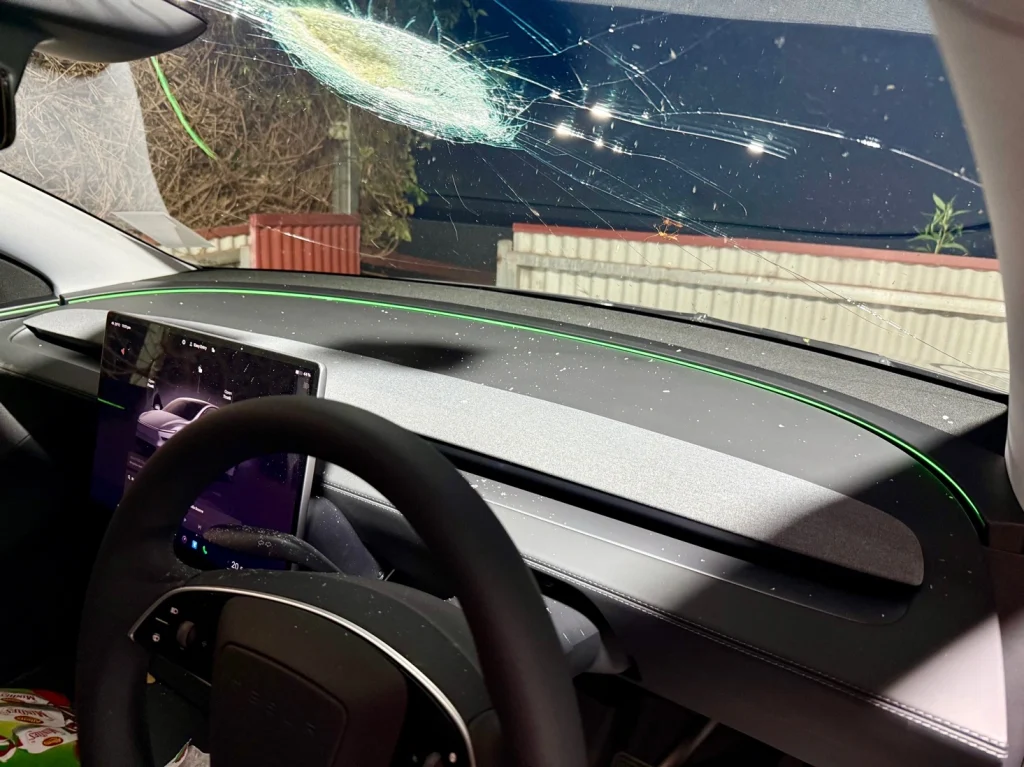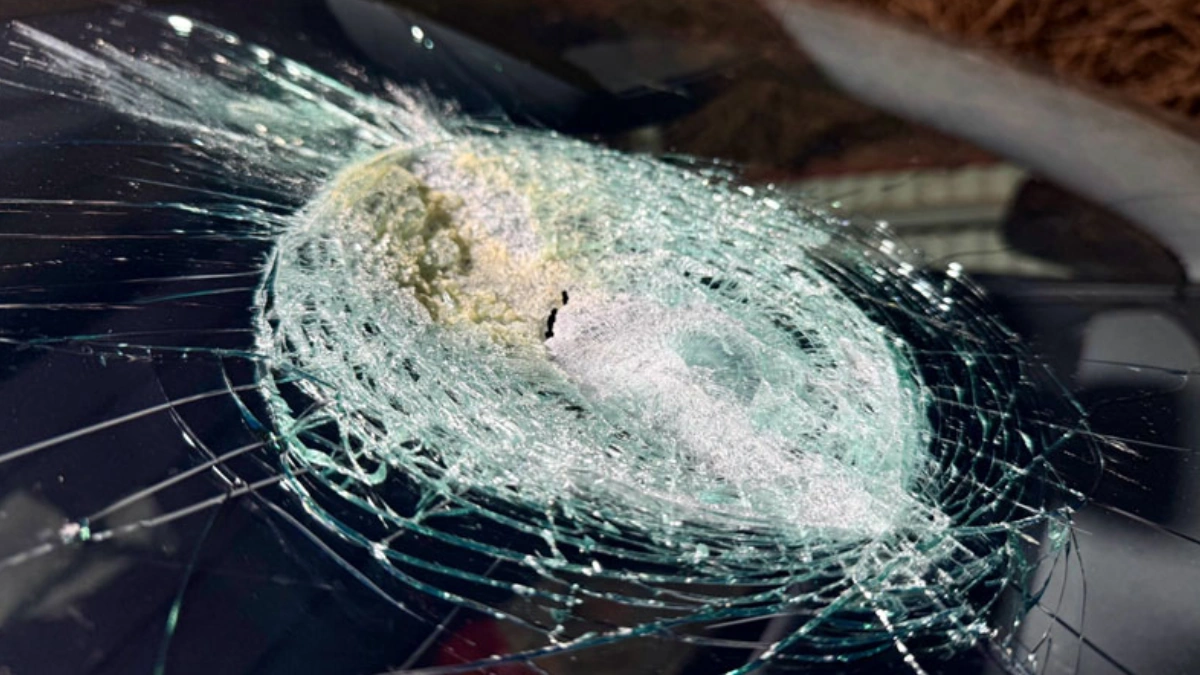Scientists at the South Australian (SA) Museum are investigating a possible meteorite impact on a moving vehicle.
The incident took place along the Augusta Highway, about 40 km (25 miles) north of Port Germein. Whyalla veterinarian Andrew Melville-Smith and his wife, Jo, were driving north of Port Germein, South Australia, late on October 19, when a loud bang and sudden impact struck their brand-new Tesla Model Y.
The vehicle was operating in Full Self-Driving (FSD) assist mode, which, according to Andrew, saved their lives.
“I was out of it,” he said of the moments after the impact. “It was extremely violent, and we were blasted by high-speed glass shards.
“I thought we’d crashed. The cabin was full of smoke.
“I wiped the glass away and saw the car was still driving. If I had been driving, we would have gone off the road.”
Andrew drove the vehicle home to Whyalla and notified the South Australian Museum of the possible meteorite strike after ruling out other possibilities.
 Andrew Melville Smith was in his Tesla Model Y when it was hit by a suspected meteor on October 19, 2025. Credit: Andrew Melville-Smith/SA Museum
Andrew Melville Smith was in his Tesla Model Y when it was hit by a suspected meteor on October 19, 2025. Credit: Andrew Melville-Smith/SA Museum
 Impact crater left behind by a potential meteor impact on a moving car in Australia. Credit: Andrew Melville-Smith/SA Museum
Impact crater left behind by a potential meteor impact on a moving car in Australia. Credit: Andrew Melville-Smith/SA Museum
While it is likely that the object wasn’t extraterrestrial, what makes this case interesting is that the glass around the impact area appears to have melted slightly. The acrylic layers of the windscreen also show signs of discoloration, as if they had been burned.
The SA Museum’s assistant collection manager of mineralogy, Kieran Meaney, said that if the object proved to be a meteorite, it would be the first recorded case of one hitting a moving vehicle.
Dr. Meaney was initially sceptical because the odds of a meteorite striking a moving vehicle are immeasurably low.
“We get a lot of meteorite inquiries at the Museum, and most of the time they turn out to be rocks from Earth doing a very good impersonation of a meteorite,” Dr. Meaney said.
“So my initial thought was, nah, there’s no way this is going to be the real deal.
“And then, once I looked at all the details — the glass of his windscreen seemed to have melted a little bit, and the acrylic layers in the glass had discolouration, almost like they’d been burnt.
“It was certainly hit by something, and it was something hot — and we don’t have another good explanation for what else it could have been.”
 Inside view of the crater formed by the suspected meteor crash on a Tesla in Australia. Credit: Andrew Melville-Smith
Inside view of the crater formed by the suspected meteor crash on a Tesla in Australia. Credit: Andrew Melville-Smith
 Credit: Andrew Melville-Smith
Credit: Andrew Melville-Smith
Windscreen glass melts at around 1 400°C to 1 600°C (2 550°F to 2 900°F). The object that struck must have been extremely hot; an average rock would need to be travelling faster than the speed of sound to reach those temperatures.
What remains unclear is that if it were indeed a meteorite; there should have been multiple bright fireball sightings in the region. However, no such reports were received.
“Two, three, or four minutes before this rock hit the car, there should have been, widely observed across that region, a fireball in the sky — at least as bright as a full moon, if not significantly brighter,” said Jonti Horner, a professor of astrophysics at the University of Southern Queensland.
He added that, contrary to what is portrayed in Hollywood films, meteorites are typically cold to the touch by the time they reach Earth.
“The reason is these things have been held at the cold, cold temperatures of deep space for billions of years, and they’ve had only a fleeting few seconds of being heated up as they pass through the atmosphere,” Horner explained.
“That means they have a very thin layer of heat on the outside and a lot of cold on the inside.”
Professor Horner said the case was a “challenging” one to piece together and that other potential explanations should not be ruled out.
“Maybe it’s something that’s fallen off an aircraft flying overhead,” he said.
“Not saying it isn’t a meteorite–I’m just saying there’s good cause to be sceptical when it could just be a rock from another source.”
References:
1 Possible meteorite strike investigated by Museum scientists – SA Museum – October 30, 2025
2 Meteorite Miracle: Tesla Model Y’s FSD saves occupants from a crash in South Australia – Whylalla Vet – October 26, 2025
3 SA Museum investigates whether meteorite collided with car on regional highway – ABC News – October 28, 2025

